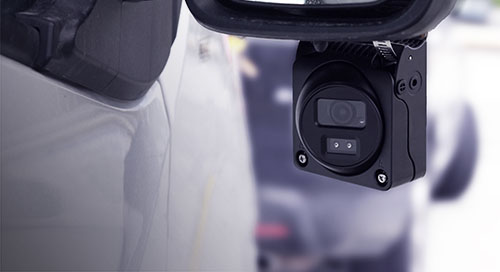Increase Visibility Around Vehicles with Surfsight®️ Auxiliary Cameras

Collisions are costly. Not only do accidents result in property damage and lost productivity, they can also lead to devastating injuries and even fatalities. With the average cost of a fleet vehicle accident hovering around $70,000 in the U.S., many companies choose to self-insure their vehicles and drivers.
To help fleets manage these costs, we are excited to introduce the Surfsight® Auxiliary Cameras to help extend and improve visibility around vehicles. With rear-end and side-impact collisions accounting for roughly 54% of all vehicle crashes, auxiliary cameras can be an essential tool in providing the extra visibility needed to mitigate false claims, monitor fleets, and better protect vehicles and drivers. They can also serve as proof of service, such as offering video evidence of delivery or location upon arrival, and even ensure that goods and materials are properly secured and not stolen.
Video telematics has become a game-changer in the fleet management industry. By implementing a comprehensive video telematics suite of applications, fleet managers can receive immediate event notifications, view and analyze events, take immediate action, collect evidentiary data, and comply with organizational policies and regional safety regulations.
It's clear that video telematics are a must-have for fleet managers who are focused on protecting their assets and drivers. With more visibility around the vehicle, fleet managers can take action to help prevent accidents and exonerate their drivers from false claims.
This additional visibility can help drivers comply with regulations in different regions, such as the Direct Vision Standard in the UK, by providing them with a more comprehensive view of the area surrounding their vehicle, including blind spots that are common in larger vehicles. Auxiliary cameras can be installed on the side, front, and rear of the vehicle to record cyclists, pedestrians, and other road users who may be near heavy goods vehicles. These cameras can also be used to provide a better view of the road ahead and any potential obstacles or hazards that may be present. By utilizing auxiliary cameras to enhance vehicle visibility, fleets can improve the safety of their drivers and reduce the risk of accidents on the road.
See The Full Picture
In today's fast-paced world, fleet managers need a flexible and easy-to-use solution to ensure their drivers' safety and the protection of their assets. The Surfsight auxiliary cameras seamlessly integrate with the Surfsight dash cam, providing an extended view around the entire vehicle and/or cargo area.
Introducing Surfsight Auxiliary Cameras
Fleets can choose from wrap mount (also known as side cameras) or flush mount (also known as rear cameras) options. The wrap-mount auxiliary camera can be hung on round surfaces such as a vehicle mirror while the flush-mount auxiliary camera is designed to be mounted flush on flat surfaces, such as the back of a vehicle, by drilling it in place.
There are two configuration options for Surfsight auxiliary cameras: wired and Wi-Fi. When installing auxiliary cameras solely on the side near the vehicle mirrors, fleets can choose between the wired and Wi-Fi connectivity options. In an installation set-up that involves different parts of the vehicle (back of the vehicle, cargo, roof etc.), no matter what the vehicle size is, the wired connectivity method is recommended to ensure connection stability.
While the wired solution is more reliable in obstructed environments and is more expandable as it allows adding more cameras to vehicles over time, the Wi-Fi solution is easier and faster to install and can cut down installation costs per vehicle. Hybrid solutions are currently not supported.
A Durable Solution
One of the standout features of the auxiliary cameras is that they are IP69K rated, which means they are dustproof, waterproof, and can withstand high pressure and steam cleaning. They can operate in a range of temperatures, even in extreme conditions.
Full Flexibility
Fleets can install up to four auxiliary cameras anywhere inside or outside the vehicle and choose from two mount types (wrap or flush) and two available configurations (wired or Wi-Fi). This flexibility allows fleet managers to customize the camera setup according to their needs.
Available now globally, the Surfsight auxiliary camera is an essential tool for fleets who prioritize drivers' safety, want to protect their assets, and ensure their fleet operates as efficiently as possible. The cameras provide additional video coverage and can help coach drivers to operate their vehicles more safely and efficiently, ultimately improving the fleet's overall performance.
